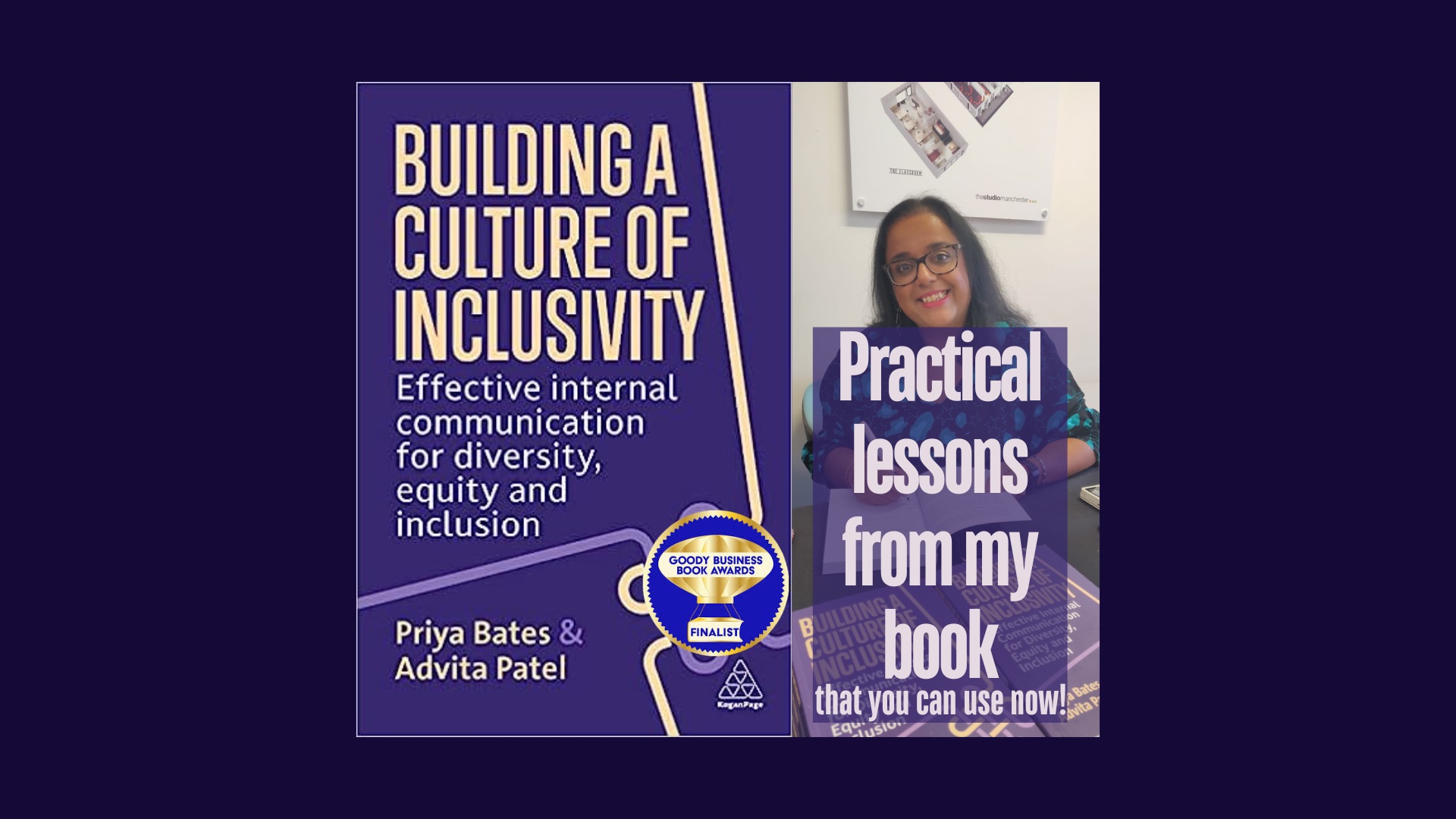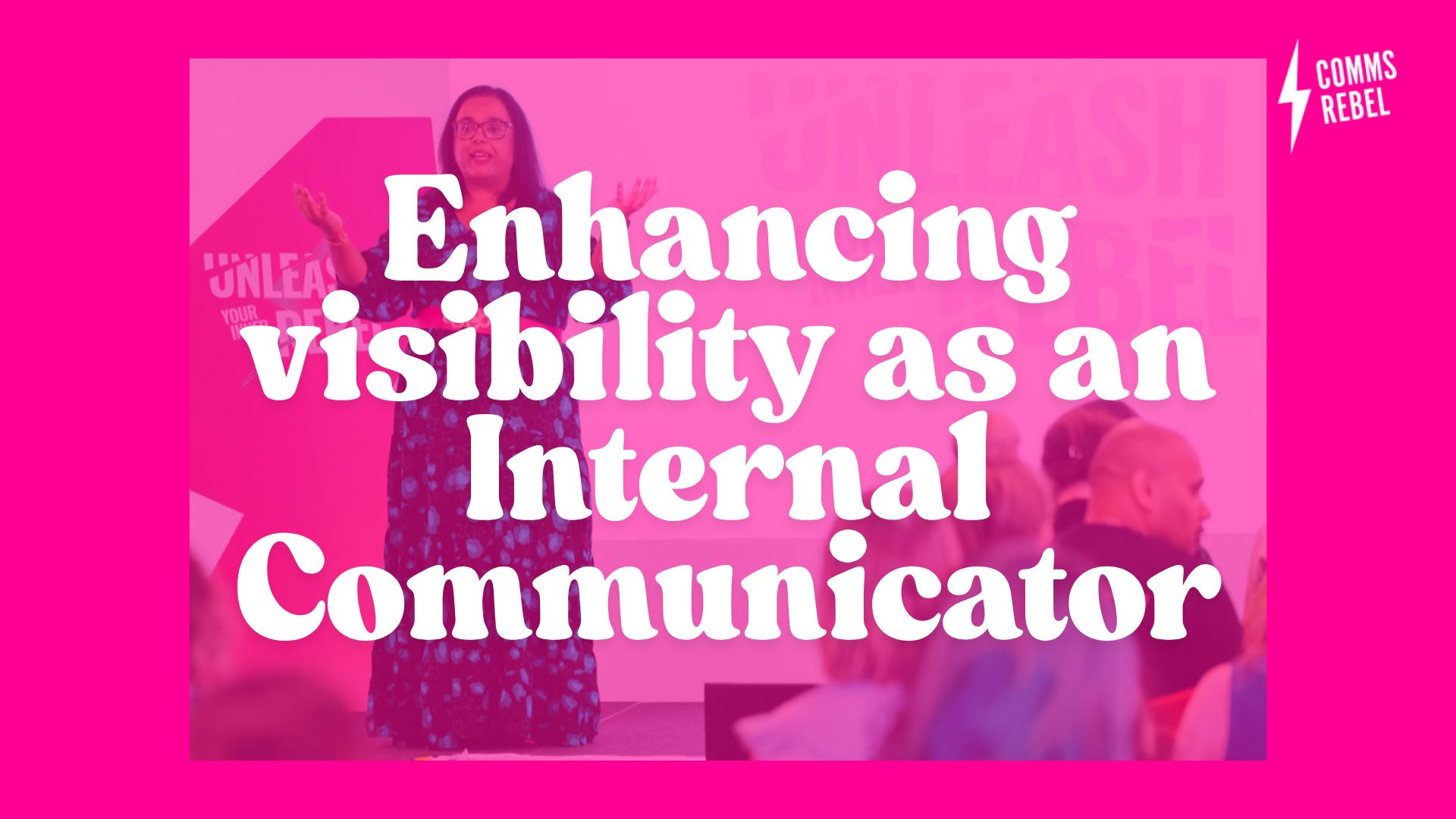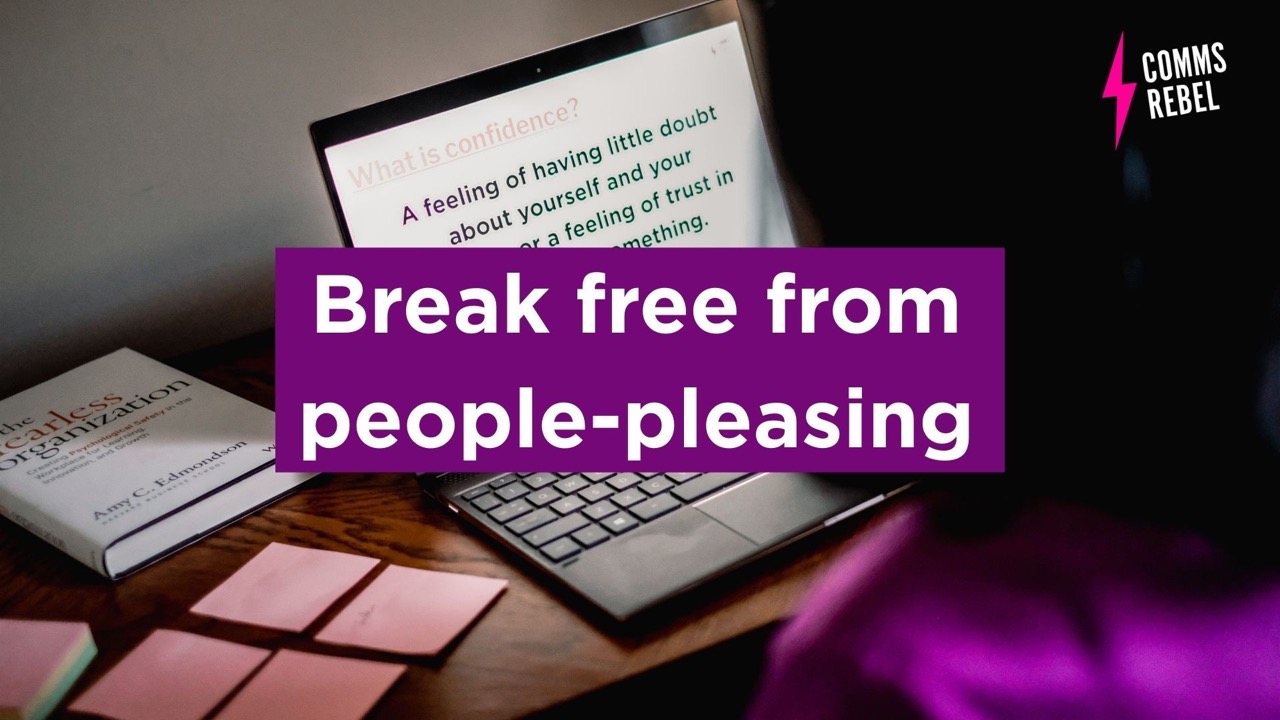It’s been one year since Building A Culture of Inclusivity, which I co-wrote with Priya Bates, was published. I’m chuffed to see people reading the book and bringing their learnings to life in their organizations!
The book offers plenty of practical insights, giving you the tools to foster inclusivity in your organization. In this blog, I’ll share five takeaways which will inspire you to take action now.
Five Practical Lessons From Building A Culture Of Inclusivity
1 – Inclusion is more than a comms problem.
Internal communications can contribute to building inclusive cultures – how we add value to the organisations we support is vital. However, this doesn’t mean that inclusion is our problem to own. As internal communicators, we can influence and lead by example. It’s likely you will be faced with resistance – any change can feel uncomfortable – but we have the opportunity to connect the dots, help leaders communicate better and ensure our colleagues relate to the organization’s overall mission, vision and values.
Things to try:
- How can you help leaders understand the outcomes and organizational impact they seek when they request communications support? Start by asking what does success look like?
- It’s easy to fall into the trap of ‘that’s how things are done here’. Ask questions and observe before coming to conclusions. How can you share findings with leaders?
2 – Curiosity is one of the best tools we have.
In our roles, we often have to make quick decisions about communicating organisational updates to our colleagues. These mental shortcuts can lead us to avoid information that we find uncomfortable or make assumptions. Rather than focus on assumptions, which can harm the trust we build, we must be curious and ask questions. This will also encourage stakeholders to identify their own biases and understand the gaps. Curiosity allows us to improve relationships, build connections and think more innovatively.
Things to try:
- Be aware of biases and how you can build trust with others. How well do you know yourself and your biases about certain people?
- Curiosity helps to remove biases. Ask relevant questions and take time to really listen to what others have to say.
- Take a look at our SPARK framework (p91) for steps to build confidence in your curiosity.
3 – Inclusive internal communications is possible.
We play a vital role in organizational culture, crafting messages and bringing people together to deliver on the purpose and mission of an organization. Inclusive internal communications means two-way engagement, the ability to challenge respectfully and active listening.
Things to try:
- How often do you review your internal comms channels to ensure they are fit for purpose and inclusive?
- How much impact do you have? Do you have strong relationships with leaders, and can you influence change? What can you do differently?
- How can you use your role to actively listen to employees? How can you encourage leaders to do the same? What would this look like for your organisation?
4 – Building a culture of inclusivity takes time.
Inclusion work is not a quick fix. It can take years to create a plan and then implement it. Try to focus on progress and moving forward as a sign of success rather than completion. Models and frameworks rooted in research and analysis make our jobs easier. See chapter seven of Building A Culture Of Inclusivity for frameworks and models that will help deepen your understanding.
Things to try:
- Where do you sit on the change curve? What about your leaders?
- Are you looking for a quick fix or willing to do the work?
5 – Understand the power words can have.
Inclusive language can help create an inclusive workplace culture. It can help people feel included, but it takes conscious effort and continued learning from everyone within your organization. It’s not our role to be the language police – but we can lead by example and encourage our colleagues and leaders to do the same.
Things to try:
- Get curious about your organization’s communications – ask colleagues for their feedback on the language
- Think about the stories and campaigns you share – how can you make them more inclusive?
I hope these five practical lessons inspire you to take action within your organization!
Your reviews and recommendations of the book are invaluable in spreading the message of inclusivity. Please leave a review on Amazon.
And if you need any help with inclusive internal communications, do get in touch!


